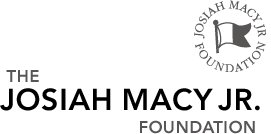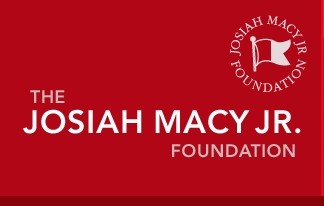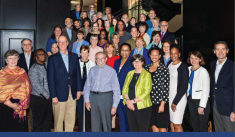Our Grantees
Across the Foundation’s priority areas, our grantees are working to improve the health of the public through innovative research and programs. The Foundation awards up to 40 grants on a rotating schedule each year.
From ACOs to Homeless Shelters: Health Professions Education in Arizona
Arizona is a largely rural state and home to a sizeable Latino and American Indian population. Arizonans have high risk factors for chronic disease and suffer from high rates of diabetes and hypertension. Whether they live in the city or a rural community, they often struggle to access high quality health care.
With support from the Josiah Macy Jr. Foundation, Arizona State University and the University of Arizona at Phoenix are implementing a graduate-level curriculum that will better prepare health professions students to provide primary care across urban and rural areas, serve an ethnically diverse population, and meet residents’ health care needs.
The curriculum will engage medicine, nursing, pharmacy, and social work students from the two universities together with a statewide graduate nursing education project, funded by the Centers for Medicare and Medicaid Innovation.
Central to the curriculum will be an extensive network of clinical sites to give the students hands-on experience providing care in a variety of community-based settings.
“Our goal is to create a cadre of highly trained professionals who can work together with patients, communities, and health systems, with the end game of improving quality care,” explains Gerri Lamb, PhD, RN of Arizona State University.
Recruiting Diverse Clinical Partners
Students will be trained in a range of primary care settings, from federally qualified health centers and nurse practitioner clinics, to evolving health care models such as accountable care organizations (ACOs) and patient-centered medical homes.
Students also will experience working with an array of patient-care services and providers that link to primary care, such as assisted living residences, nursing homes, post-acute care facilities, and homeless shelters.
“While primary care will be the hub, students will be exposed to how that hub operates at different levels,” says Lamb. For example, if students are training in an inner city health clinic, the students might start in the diabetes education program, working with the educators to address the needs of patients with diabetes. When patients visit, the students will see to their needs. If patients call in for help, the students may coordinate community-based services for them.
Clinical partners will be deeply involved in the design and evaluation of the curriculum. “We will be teaming faculty and clinical preceptors to model effective collaboration between education and practice settings,” explains Lamb.
An Interprofessional Focus
The curriculum is grounded in the belief that teamwork and collaboration are vehicles for improving quality health care. Much of the curriculum is problem-based and takes place in the practice setting, giving students from the four professions the opportunity to work together and provide team-based care.
“We want to provide students with deep learning about teamwork and collaboration. We’ve heard from students that what draws them to the interprofessional component of education is the opportunity to interact with the real world and work with real customers. Abstract problems don’t engage them as much,” says Lamb. “Students need to know they are making a difference.”
Teaching with Technology
Technology will also play a key role in the curriculum. Lamb and colleagues are exploring a range of ways to teach teamwork, from using smartphones to creating wikis and Facebook accounts—ideas sourced from students.
Partnering with the Arizona Telemedicine program, the curriculum will also use distance learning technology to connect with students in remote clinical sites.
Measuring Success: Engaging Patients
In addition to assessing the student educational experience in more traditional ways, Lamb and her colleagues plan to look at clinical outcomes and engage patients and families in evaluating whether the new curriculum helps improve health care quality.
“We want to know whether what we teach students about communication and collaboration translates into better care, better health, and lower costs,” explains Lamb. “To measure that, we’re going to be talking to the people we serve. We’ll start by asking patients to help identify what we need to measure and, once the program is implemented, we’ll rely on them to tell us about the patient experience—what it was like and how it could be better.”





 11.13.18
11.13.18